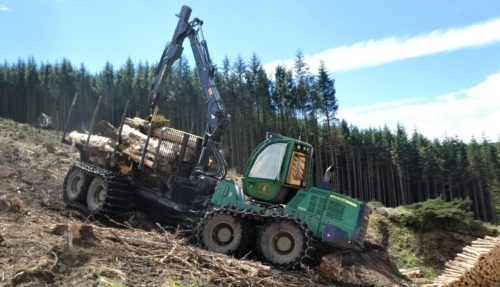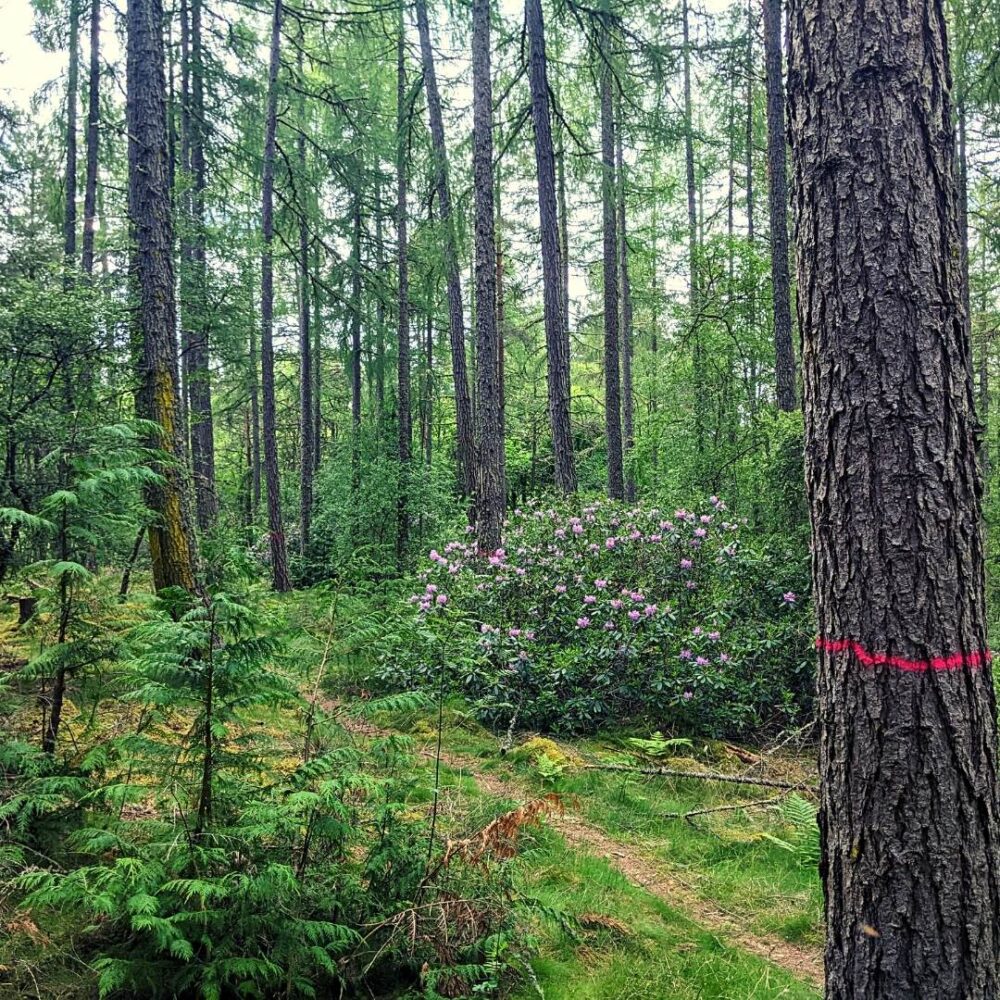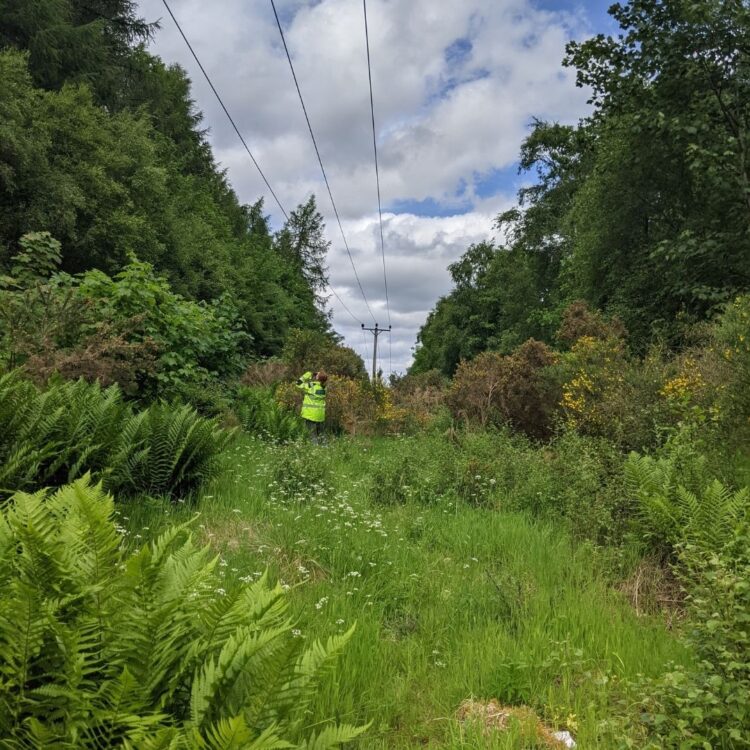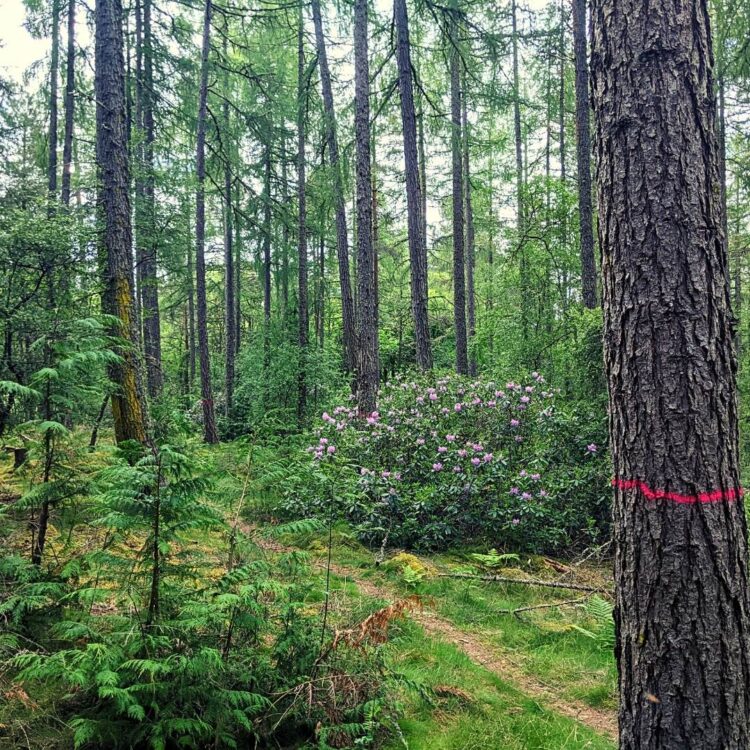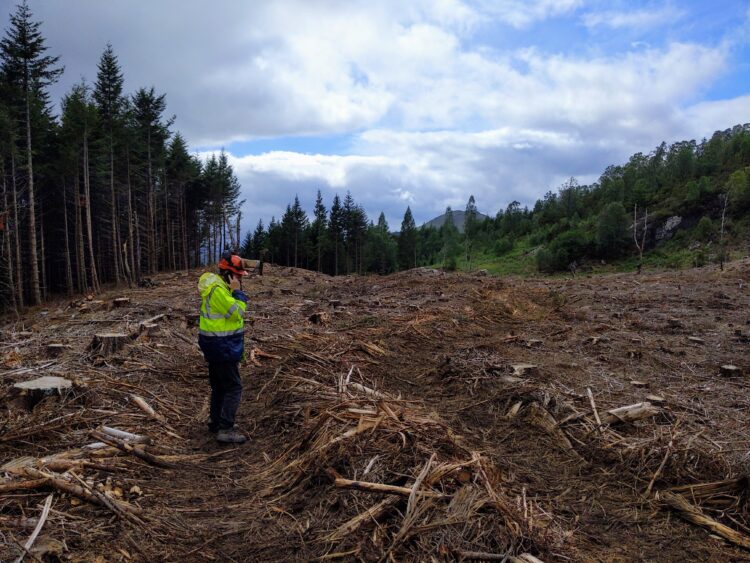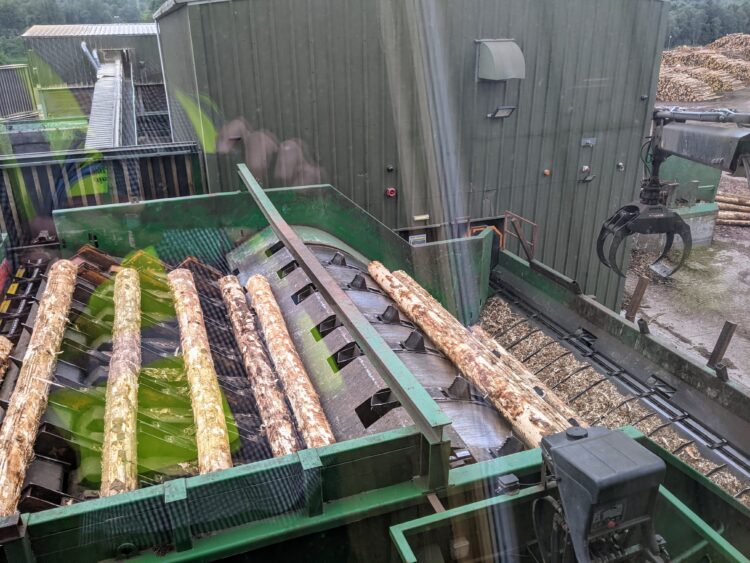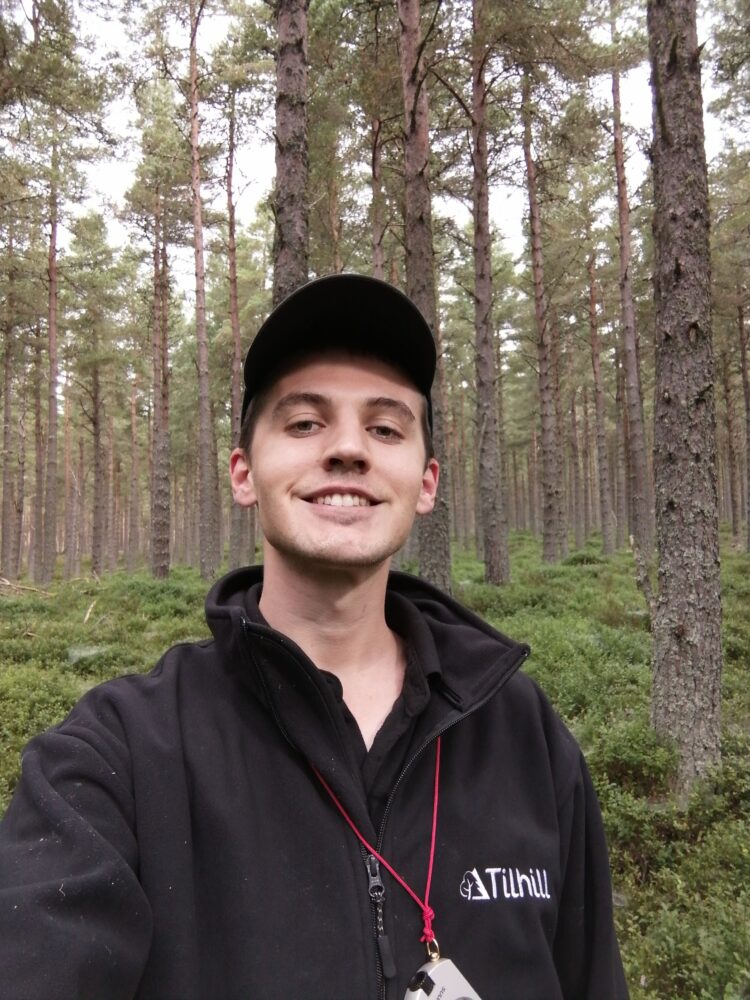As I stood watching ospreys dart in and out of a spruce forest in the northernmost reaches of the Highlands, I began to process my last few months working with Tilhill. Here I was measuring a forest for a tender, recording diameters and heights to get a good idea of how much timber might be held within each of these truly impressive trees. I’ve always enjoyed walking in the woods but doing so and getting to call it ‘work’ is fantastic.
This is the stage in the life cycle of a commercial forest where the harvesting team gets involved, usually for the first time. By this point forest managers have planned, planted, thinned and nurtured the coupe for four or more decades to get it to a point where the wood has started to grow at a diminished rate or simply the landowner has decided it is time to cash in their investment and reap the rewards of an excellent decision made years ago.
So far, my time with Tilhill, as part of its harvesting graduate scheme, have been spent viewing and interacting with forests at various stages of their cycle and I have been guilty of not seeing the wood for the trees, so to speak, becoming involved in the details of each stage and missing the bigger picture. The purpose of a harvesting manager is to provide timber.
Effectively handling each process from tendering (measuring and pricing) the forest to later sending that forest, in the form of logs, into one of our mills. Ensuring throughout that no creature great or small is injured or disrupted; and the effect on people’s lives is kept to the barest minimum, that water leaves the site as clear as when it fell from the skies and that machines and their operators are working as efficiently and safely as possible.
It is fascinating going from that initial stage; wandering through a mature forest, taking measurements with my clinometer and tape, to weeks later, after much planning and risk assessing, getting work started via a pre-commencement meeting with contractors and landowners.
My role from then on as a harvesting assistant involves supervising the harvesting. I drive all over the Highlands from Wick to Skye, then down to Fort William and as far east as Stonehaven visiting remote sites, discussing order of work with harvester/forwarder machine operators, making sure they are aware of the constraints and risks of each unique site. Inspecting logs to ensure they are to specification and stacked correctly, all the while checking signs to warn the public of the dangers involved in cutting down trees and staying away from log stacks are still in place and, importantly, ensuring no mucky water leaves the site.
Once the trees are cut down, they are sorted into log piles by the forwarder operator depending on product. We then measure these stacks using a special formula and the data gets beamed to Tilhill’s designated log supply managers who decide how many lorries-worth can go into the mill that week.
My manager organises lorries from local haulage companies to come and collect the logs and just like that, the forest has been harvested, moved miles across Scotland and transformed into something useful that will store carbon for years to come in people’s homes, offices, parks and gardens. Even the by-product of the logs is turned into something that benefits people: such as woodchips and sawdust that can be used for all manner of products or even burned as a clean, green, renewable energy.
Seeing trees not only for their magnificent beauty but also their magnificent utility means you value them twice as much as you might of done before.
About Kinsey
Kinsey joined Tilhill in 2021 as an Assistant Harvesting Manager, after graduating from the University of Cumbria with a BSc (Hons) in Forest Management. He previously owned a retail business in Lancashire before deciding to follow his passion and retrain as a forester.
Kinsey is a member of the Institute of Chartered Foresters and currently assists the North Highland harvesting team covering sites from Skye to Aberdeen, Fort William to Wick.
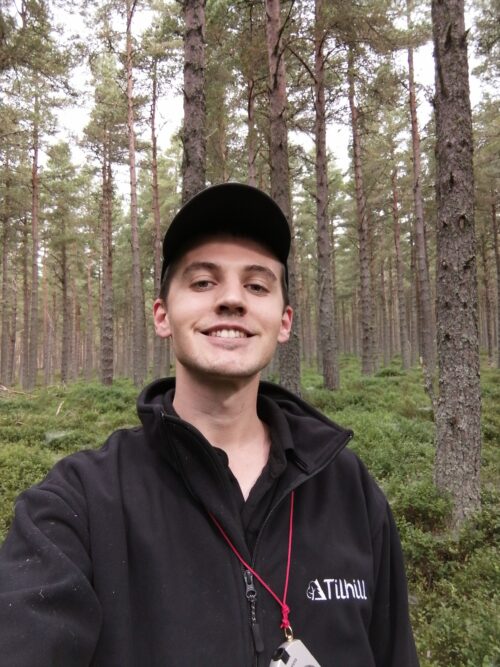
View More from Tilhill staff and Graduates
Visit the Tilhill Blog

Blogs and Articles
Find out moreGraduate programme
The Tilhill Graduate programme runs every year in December

Find out more
Find out moreFind out more
See Tilhill’s timber harvesting and marketing services. From standing timber to market.
